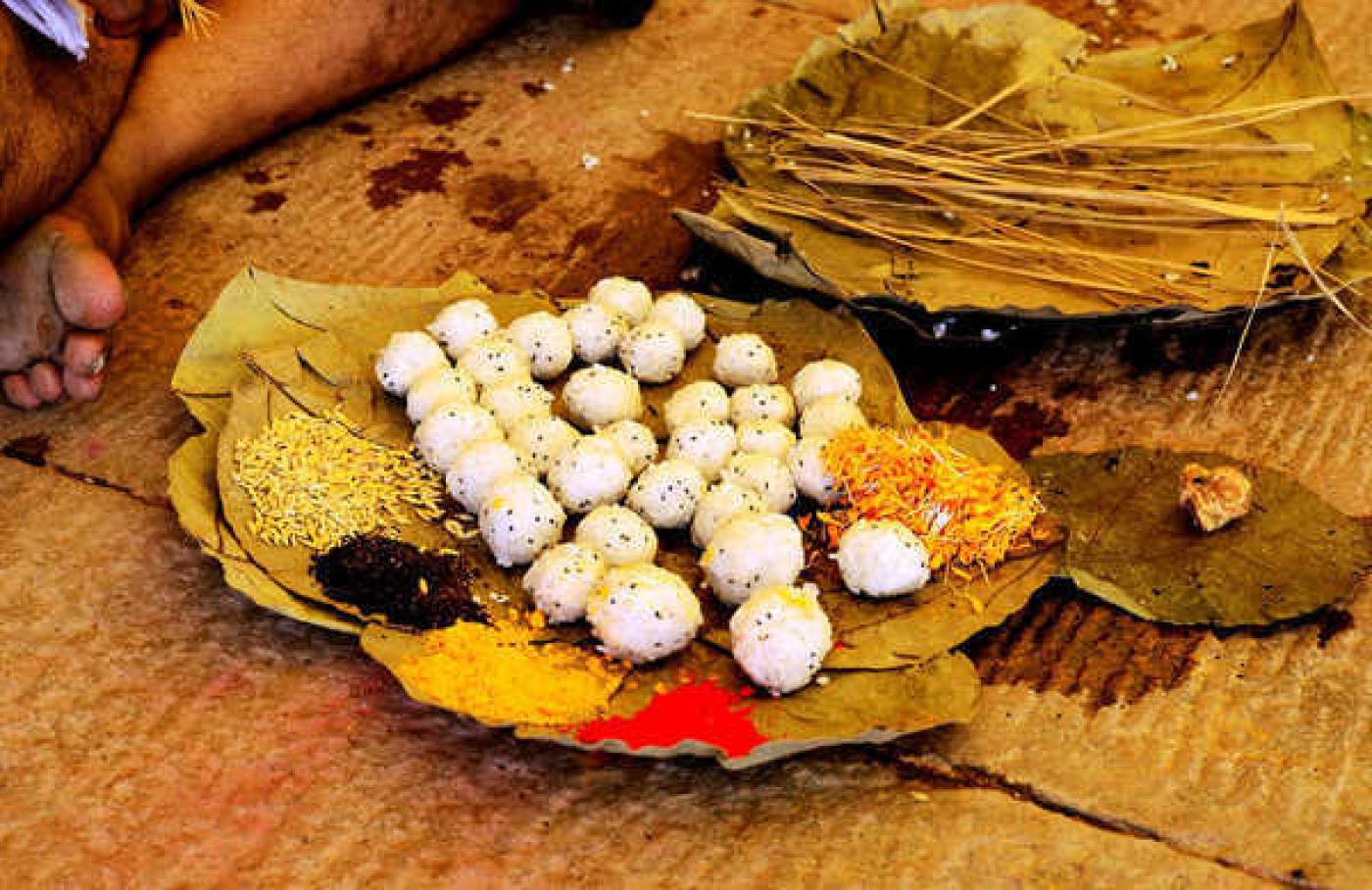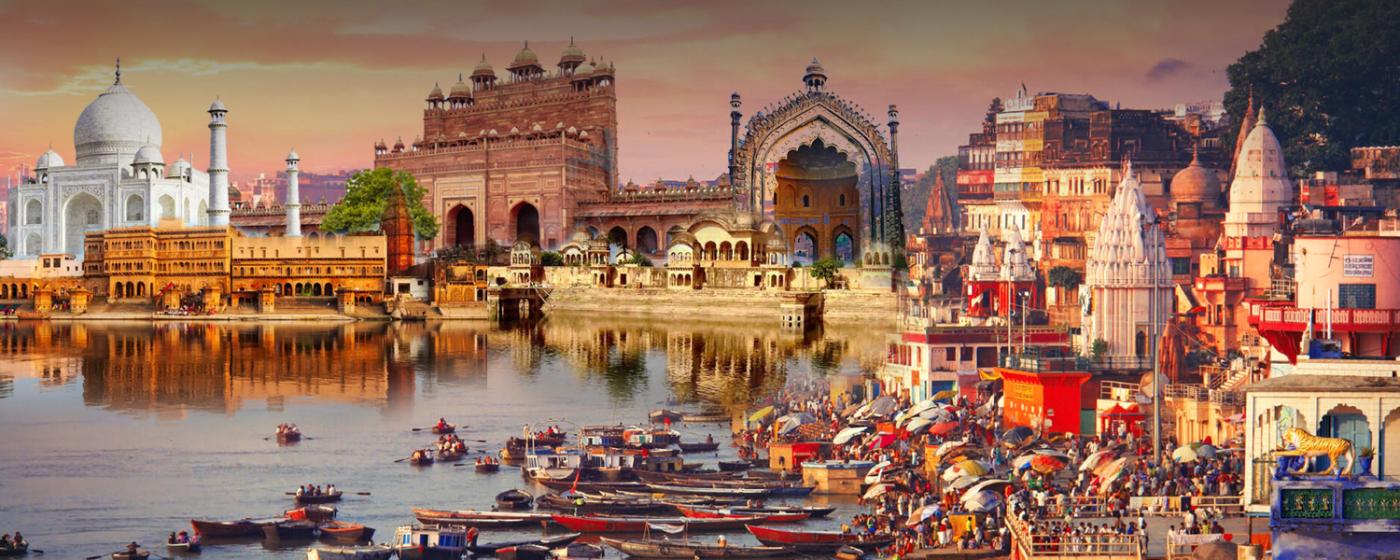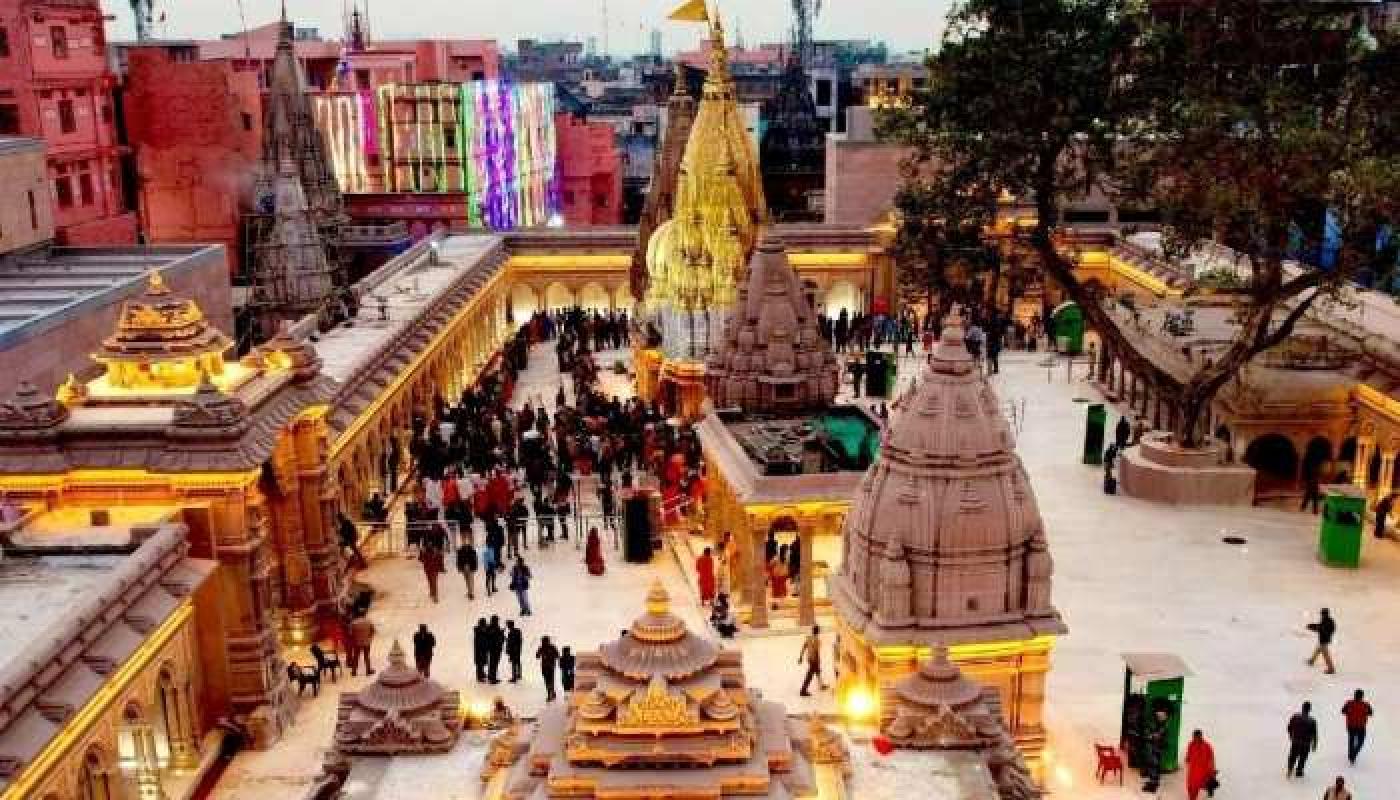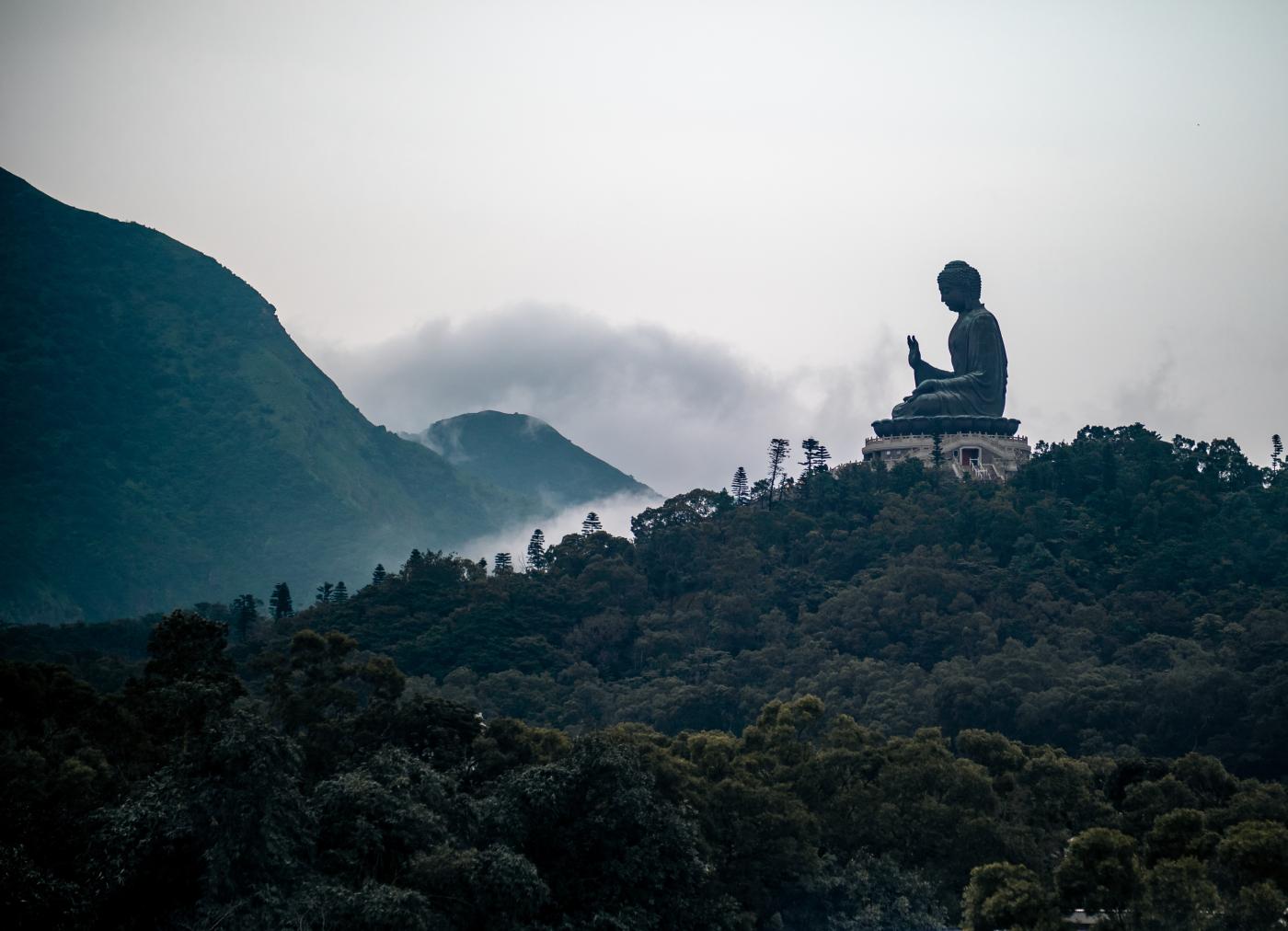Bodhgaya continued to function as a centre of Buddhist scholarship and pilgrimage up to at least the beginning of the 15th century.Bodhgaya is one of the sacred places for the Buddhists as well as for the Hindus. Here under the Bodhi Tree, Gautama attained supreme knowledge to become Budhha, the `Enlighted One'. The tree from the original sapling still stands in the temple premises. It is the most important Buddhist pilgrimage centre as Buddhisrn was born here. Buddhagaya today is a place of attraction for the entire Buddhist world and groups of pilgrims and visitors come to visit it all the year round, some to pay their obeisance to this great edifice of veneration, whereas for some to come and see this great edifice of history.
For Booking Call/WhatsApp: 9415218328 / 9415221994
Destinations
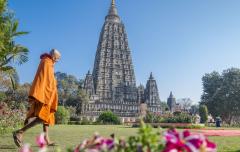
It is believed that 250 years after the Enlightenment of the Gautam Buddha, Emperor Asoka visited Bodh Gaya. He is also considered to be the founder of the original Mahabodhi temple. It is consisted of an elongated spire crowned by a miniature stupa and a chhatravali on a platform. The mouldings on the spire contained Buddha images in niches. It is believed that the temple was constructed or renovated in the 1st century during the Kushan period. With the decline of Buddhism in India, the temple was abandoned and forgotten, buried under layers of soil and sand.The temple was later restored by Sir Alexander Cunningham as part of his work for the British Archaeological Society in the late 19th century. In 1883, Cunningham along with with J. D. Beglar and Dr Rajendralal Miitra painstakingly excavated the location. Extensive renovation work was done to restore Bodh Gaya to its former glory.
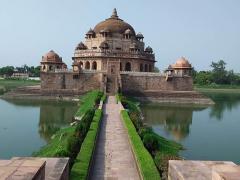
Sher Shah Suri is truly regarded as one of the brilliant national heroes of India. Apart from a brave, intelligent and tactful military genius with shrewd political foresight, Sher Shah (original name Farid Khan) was a person of extra ordinary skill and ability in civil administration also. His father Hasan Shah was a Jagirdar of Sasaram. Sher Shah was born in 1472 AD and completed his formal education at Jaunpur. Because of his high personal qualities, starting his career as a small jagirdar, he ascended the throne of Delhi in 1540 AD after driving away Humayun, the Mughal emperor.
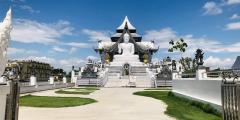
Situated in Bodhgaya, the Metta Buddharam Temple stands as a captivating Thai temple adorned with an outer layer of stainless steel and decorative mosaics utilizing mirrors. Embracing the Thai Temple style of architecture, this temple exemplifies simplicity with a limited colour palette. The roof tiles, crafted from pressed stainless steel, complement the sheeted stainless steel interior, while the main temple floor boasts a wooden surface.
Beneath the temple lies a meditation room with a marble floor, providing an ideal setting for devotees to engage in peaceful meditation. The temple is embellished with meticulously handcrafted sculptures made from a blend of white cement, clay, and epoxy, adding to its artistic allure.

The Spiritual Tapestry of Gaya Vishnupad Temple
Introduction
Gaya Vishnupad Temple, one of Bihar's most captivating temples, stands as a beacon of spirituality, drawing countless devotees daily to partake in prayers and seek divine blessings. Situated in the sacred city of Gaya, approximately 100 km from the capital, Patna, this temple holds a unique historical and religious significance.
Historical Tapestry
Vishnupad Mandir is perched on the serene banks of the Falgu River, its history interwoven with legends dating back centuries. According to popular belief, Lord Vishnu left an enduring mark on a basalt block, now enshrined within the temple. The legend narrates Lord Vishnu's triumph over the demon Gayasur, marking the very spot where the deity placed his foot upon Gayasur's chest.
Gaya, a significant pilgrimage site for Buddhists, witnessed Lord Buddha preaching the Fire Sermon (Adittapariyaya Sutta) to around 1000 fire-worshipping agriculture workers. The profound impact of Buddha's discourse led to their collective conversion to Buddhism.
Architectural Marvel and Spiritual Significance
1. The Vishnupad Temple Structure
The temple's present structure, constructed in 1787 by Devi Ahilya Bai Holkar, stands proudly on the riverbank. The temple's architectural grandeur includes a 30-meter tall structure with eight rows of exquisitely carved pillars supporting the pavilion. Built with large grey granite blocks joined by iron clamps, the octagonal shrine faces east, featuring a pyramidal tower that soars 100 meters into the sky.
2. Lord Vishnu’s Footprint
The centrepiece of Vishnupad Mandir is the sacred footprint of Lord Vishnu, measuring around 40 cm and encased in a silver-plated basin. This revered imprint, surrounded by intricate symbols such as Shankha, Chakram, and Gadham, is believed to be Lord Vishnu's weapons.
3. Immortal Banyan Tree and Sacred Artifacts
Adjacent to the temple, an immortal banyan tree named Akshayabat serves as the site for final rituals for the deceased. At the temple's pinnacle, a gold flag and Kalash glitter, with a fascinating tale of two would-be thieves who were turned to stone during an attempted theft.
4. Spiritual Insights and Practices
Vishnupad Temple Gaya Timings and Offerings
Devotees can witness the temple's spiritual vibrancy during the daily darshan, open from 6:30 AM to 7:30 PM, even on public holidays. The rituals performed here create an atmosphere of devotion, inviting worshippers to connect with the divine.
Historical Quandary
The exact date of Vishnupad Mandir's construction remains unknown, shrouded in the mists of time. Legends suggest that Lord Rama and Sita Mata visited this sacred place, adding a layer of historical enigma to the temple's narrative.
Planning Your Pilgrimage
Access and Accommodation
By Rail:
Vishnupad Temple is conveniently located 3 km south of the Railway Station.
By Air:
A 17-minute cab ride from the nearest airport, 7 km away from Vishnupad Temple, Patna airport, is the most accessible point for air travellers.
By Road:
Well-connected by road to Gaya, Nalanda, Rajgir, Patna, Varanasi, and Calcutta, the temple is easily accessible by road transport.
Where to Stay in Gaya
Gaya offers a plethora of accommodation options catering to various budgets. From 5-star hotels to budget-friendly lodgings, visitors can expect a comfortable stay with amenities like Wi-Fi, hygienic food, and a clean environment.
Culinary Delights in Gaya
The city, being a tourist hub, boasts numerous restaurants and cafes. From multi-cuisine options to local favourites like Hari Om Cafe, Khushi Family Restaurant, and Siam Thai, Gaya ensures a delightful culinary experience for every palate.
Exploring Beyond Gaya Vishnupad Temple
Other Temples in Gaya
Mahabodhi Temple:
An ancient Buddhist Temple in Bodh Gaya, about 96 km from Patna, where Buddha attained enlightenment. A UNESCO World Heritage Site.
Sankata Maaka Mandir:
A serene temple providing inner peace, attracting visitors for spiritual rejuvenation.
Mangala Gauri Temple:
Dedicated to Maa Mangala Gauri, an incarnation of Shakti, known for its historical and religious significance.
Pretshila Hills:
A sacred place for ancestral worship is believed to be the summit where God Yama resides.
Phalgu River Ghats:
Used for performing ancestral rites, with two streams, Lilajan and Mohana, contributing to the spiritual ambience.
Frequently Asked Questions
Visitor Information
1. Is the Vishnupad Temple open throughout the year?
Yes, the temple is open every day, 365 days a year.
2. What are the entry fees?
Entry to Vishnupad Temple is free of cost.
3. Is online darshan available?
No, online darshan facilities are not available.
4. Can one carry electronic gadgets into the temple?
No, all electronic gadgets are prohibited within the temple premises, including mobiles, cameras, and laptops.
5. Facilities for Specially-Abled and Senior Citizens?
No specific facilities are available, although a wheelchair can be provided upon request.
Weather and Best Time to Visit
Best Time to Visit Gaya:
November to February, offering ideal weather for exploring Vishnupad and other temples.
Summer Weather:
March to June, with daytime temperatures soaring up to 45 ºC.
Winter Weather:
November to February, with pleasant temperatures around 20 ºC.
In Conclusion
Gaya Vishnupad Mandir, where history, architecture, and divine spirituality converge. Allow the sacred energy of this temple to guide you towards a profound connection with the divine, making your visit a transformative experience.
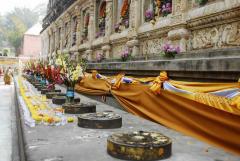
Cankamana is one of the most sacred shrines as a part of the Mahabodhi Temple. It is considered the pathway that was used by Buddha during his third week of meditation. This is also considered the spot where Buddha practiced walking meditation, and thus it came to be known as Cankamana. The spot denotes the footsteps of Buddha carved out as lotuses in Black stone. You’ll find these footsteps decorated beautifully with flowers. Thousands of monks visit the spot and chant in praise of Buddha, which creates a surreal and soothing atmosphere. In addition, there are several other small images of Buddha along with his disciples in the shrine. Visiting Cankamana after sunset will give you a chance to see the pathway decorated with flowers and candles, which appear wonderful.


